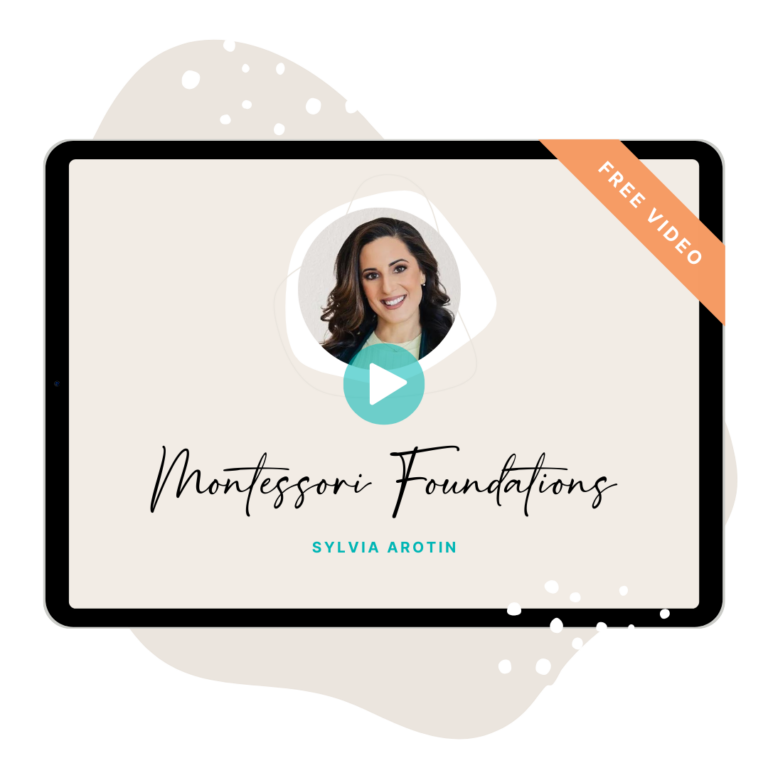In a recent LiveTalk now available inside the Childhood Potential Club, education guide Světlana sat down with Amy, a seasoned educator, coach, and former dance movement therapist, for a heart-opening conversation about self-sabotage in education. They explored the subtle, often unconscious habits that can keep us stuck, and shared practical, compassionate strategies for showing up with more presence and confidence.
Watch the full video in our Childhood Potential Club.
What Self-Sabotage Really Looks Like in Education
Světlana opens the conversation with a powerful question: How can educators support themselves — and stop unintentionally getting in their own way?
Amy’s answer is both practical and profound. She explains that many of our most frustrating moments in the classroom come not from the children, but from old patterns we’ve carried with us for years — patterns we may not even be aware of.
These patterns often come from our own childhood experiences. The adults who shaped us — their language, tone, expectations — continue to influence how we respond to children today. Sometimes, that’s helpful. Other times, it holds us back.
Recognizing these unconscious habits is the first step toward changing them.
Four Common Habits That Sabotage Your Teaching (Without You Realizing It)
Amy shares four familiar patterns that can quietly erode our confidence and effectiveness — not out of laziness or failure, but because they’ve become second nature.
1. Talk, Talk, Talk
It’s human to want to explain, to soothe, to fix a moment with words. But when a child is overwhelmed, they’re not in a place to listen — and our well-meaning words can actually make things harder.
Sometimes, the best support is less talking and more presence. A quiet moment, a gentle look, or simply sitting nearby can speak louder than any explanation.
2. Procrastination
This one hits close to home for many of us. Whether it’s avoiding a hard conversation, putting off a classroom change, or ignoring a behavior we don’t feel equipped to handle — procrastination is a form of self-sabotage.
Amy invites us to get curious: What am I avoiding? Often, the root is fear — fear of doing it wrong, fear of confrontation, or fear of failing.
Naming the feeling behind the avoidance gives us power to move forward — one small step at a time.
3. Negative Phrasing
Many of us grew up hearing phrases like “Don’t be silly,” or “That’s enough.” Without realizing it, those words can slip into our teaching, especially under stress.
Amy encourages educators to become aware of the tone and language they use, especially when redirecting behavior. Positive phrasing isn’t about sugarcoating — it’s about clarity, respect, and keeping children open to connection.
Instead of “Stop running,” try “Let’s walk together.” Instead of “Don’t touch that,” try “That stays on the shelf.”
4. Forgetting to Connect During the Calm Moments
Connection isn’t just for big feelings or big wins. In fact, the most meaningful relationships are built in the quiet, ordinary moments — greeting a child at the door, sharing a smile during snack time, or making eye contact during a transition.
Amy reminds us that connection during “neutral time” builds trust — and that trust makes it easier to support a child when challenges do arise.
Explore the fundamentals of Montessori parenting with this free video by Sylvia Arotin, offering insights and strategies to empower and educate your child.
A Simple, Powerful Shift: Connection Without Words
One of the most beautiful takeaways from this conversation is the reminder that you don’t always need to “do” more — sometimes, it’s about simply “being.”
Amy shares how a warm look, a quiet nod, or even standing close can reassure a child that they are seen, safe, and valued. These non-verbal gestures create a foundation of trust and co-regulation that words often can’t match.
She beautifully references Toni Morrison’s question: “Do your eyes light up when a child walks into the room?” That one moment of genuine presence can shape a child’s sense of belonging for a lifetime.
Why This Matters — For You and the Children You Support
Teaching is never just about managing a classroom or delivering lessons. It’s emotional work. It’s human work. And it’s deeply personal.
This conversation is a gentle invitation to give yourself grace. To reflect on the patterns that might be weighing you down. And to know that noticing them — without judgment — is the first step toward real, lasting change.
You don’t have to be perfect. You just have to be present.
Meet Amy: Educator, Coach, and Advocate for the Adults Behind the Work
Amy brings decades of experience working with children, families, and schools — but her focus has always been on the adults. As she explains in the talk, her mission is to support the people who show up for children every day: educators, parents, caregivers, and community members.
Her approach is grounded in reflection, nervous system awareness, and a deep understanding of human behavior. As a former dance movement therapist, she’s spent years observing how stress, trauma, and early experiences shape how we lead and care for others.
That’s exactly why this conversation resonates so deeply — because Amy isn’t offering quick fixes or classroom tricks. She’s inviting us to slow down, reflect, and ask: What’s really going on beneath the surface when things feel too hard?






